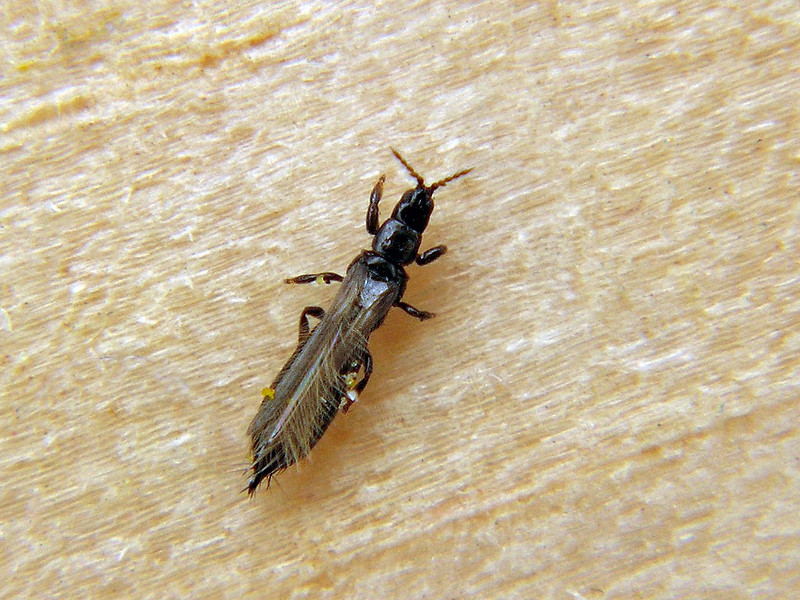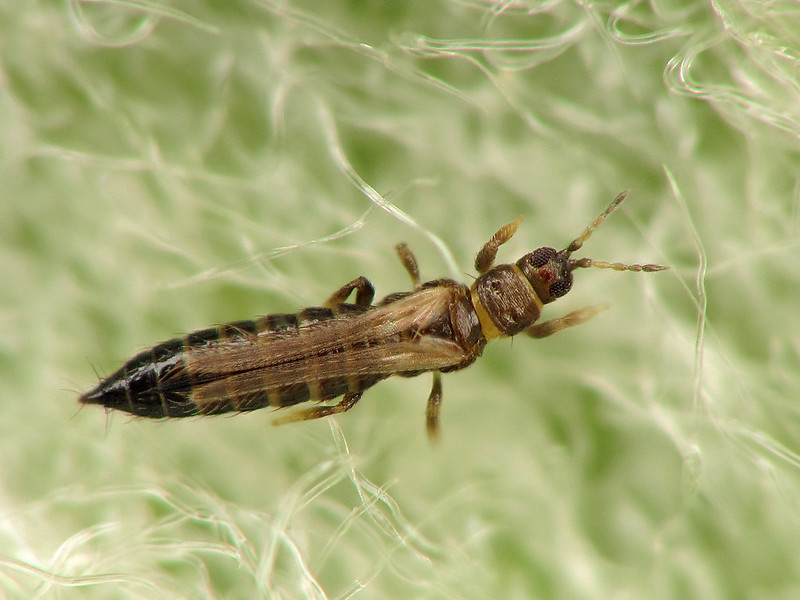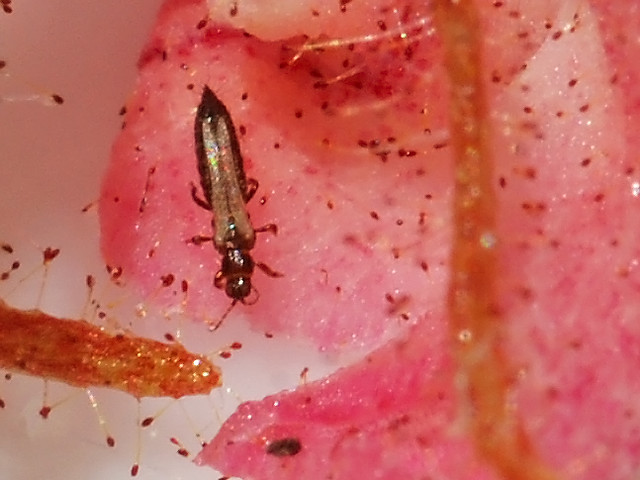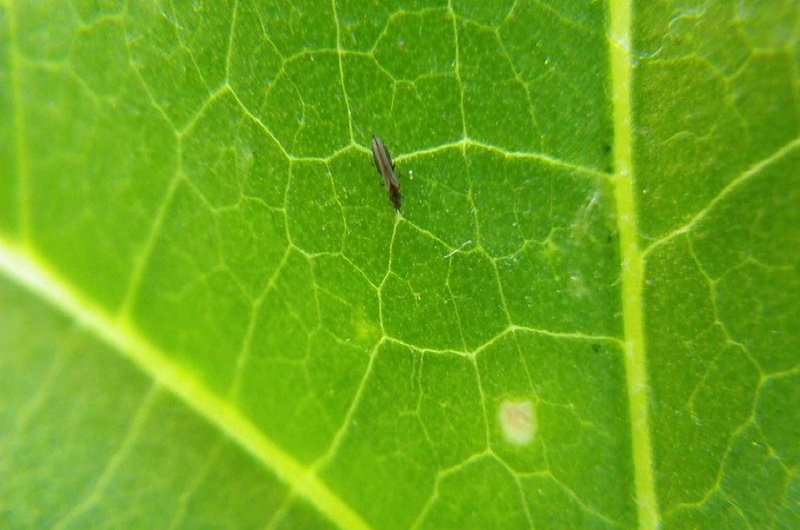Thrips are an incredibly diverse group of tiny insects that belong to the order Thysanoptera. Although reputable national organizations, like the National Plant Board and the National Plant Diagnostic Network, recognize the existence of over 7,000 different thrips species, there isn’t even a general consensus about the number of different types of thrips in the scientific community — and individual thrips species can have extremely diverse impacts on your garden.
Many thrips species feed on decaying organic substances such as leaves and other dead insects, while others eat fungi. These thrips pose no threat to your garden or farm. A few thrips species, aptly called beneficial thrips, even target garden pests like aphids, whiteflies, and other thrips. These can be actively helpful.
The thrips you will be concerned about can, on the other hand, cause extensive plant damage and even loss. As they feed on stems, flowers, and leaves, the plant can develop visible signs of insect activity, and eventually wilt. That isn’t all, though, as pest thrips can also carry over 20 different types of plant viruses that can ravage your garden. You don’t want these kinds of thrips anywhere near your well-maintained flowerbeds, vegetable garden, or fruit trees, but how can you identify them?
What Do Thrips Look Like?
Keeping in mind that there are thousands of different thrips species, some helpful things to know about the general appearance of most thrips include:
- Thrips are unusually slender insects with bodies that are extremely long in comparison.
- They generally measure between 0.5 and 14 millimeters in length, with an average of one millimeter, as adults.
- Many thrips feature characteristically narrow, fringed, and weak wings — and many don’t fly very well, instead leaping from one place to the next. Immature thrips, and the adults of some thrips species, do not have wings.
- Many adult thrips are yellow, translucent, black, or brown, while immature thrips (nymphs) tend to have a green appearance.
How Can You Tell if You Have Thrips?
Successfully identifying thrips is, unfortunately, much more difficult than spotting a mosquito, a tick, or a fly. Not only are pest thrips rather fast, despite their poor flying abilities, they also tend to be truly tiny. This makes identifying thrips a challenge even for experienced entomologists. If you do happen to see thrips, they are most likely to appear as small long bugs that quickly slither or dash across a leaf or flower without offering you the chance to get a closer look.
Even if you do manage to get a thrips, or a couple, into a glass jar for closer study, you will find it extremely tricky to determine what type of thrips you are dealing with. Often, the best way to tell that you have pest thrips in your plants is to look at the damage these pests have caused. Getting rid of them is often the only way to save infected plants.
What Does Thrips Damage Look Like?
Fortunately, you do not have to see thrips in action to be able to tell that you likely have pest thrips in your garden. Looking at the ways in which your plants were damaged can offer important insights:
- Thrips may damage leaves and flowers on trees and shrubs, but are rarely able to weaken them to the point where they can no longer survive.
- Avocado thrips can leave silver or brown colored damage on the fruits, something that doesn’t render them inedible.
- Bean thrips, which also feed on different legumes, onion thrips, Cuban laurel thrips, and many other types of thrips tend to cause leaves to turn brown or black, and the damage additionally makes leaves and petals wilt or roll up. When thrips damage flowers or leaves in as they are growing, the buds can fail to open up or may be very small and abnormally shaped.
- Citrus thrips leave their mark in the form of silvery damage on the fruit, while causing leaves to wilt and take on distorted shapes.
Western flower thrips, which are among the most common pest thrips, can feed on a wide variety of plants, from jewelweed to roses, and from grapes to peppers. These thrips are also responsible for a shocking variety of plant diseases. The damage caused by this common nuisance can be seen as lighter and darker spots on leaves, as well as shriveled and deformed leaves and petals. Some of the plants may die, and the plant diseases thrips carry can spread to other plants as well.
If you do suspect that you have thrips in your plants, the ideal course of action would be to consult pest control professionals about integrated pest management. This approach combines environmentally-friendly steps, such as the introduction of predators that eat pest thrips, with pesticides.
Citations and Credits



